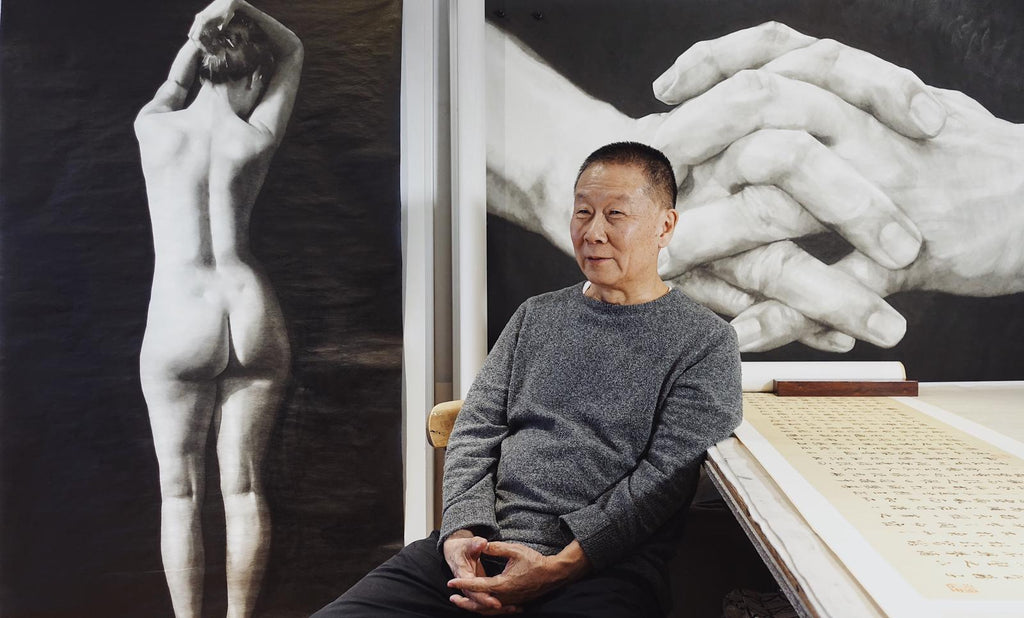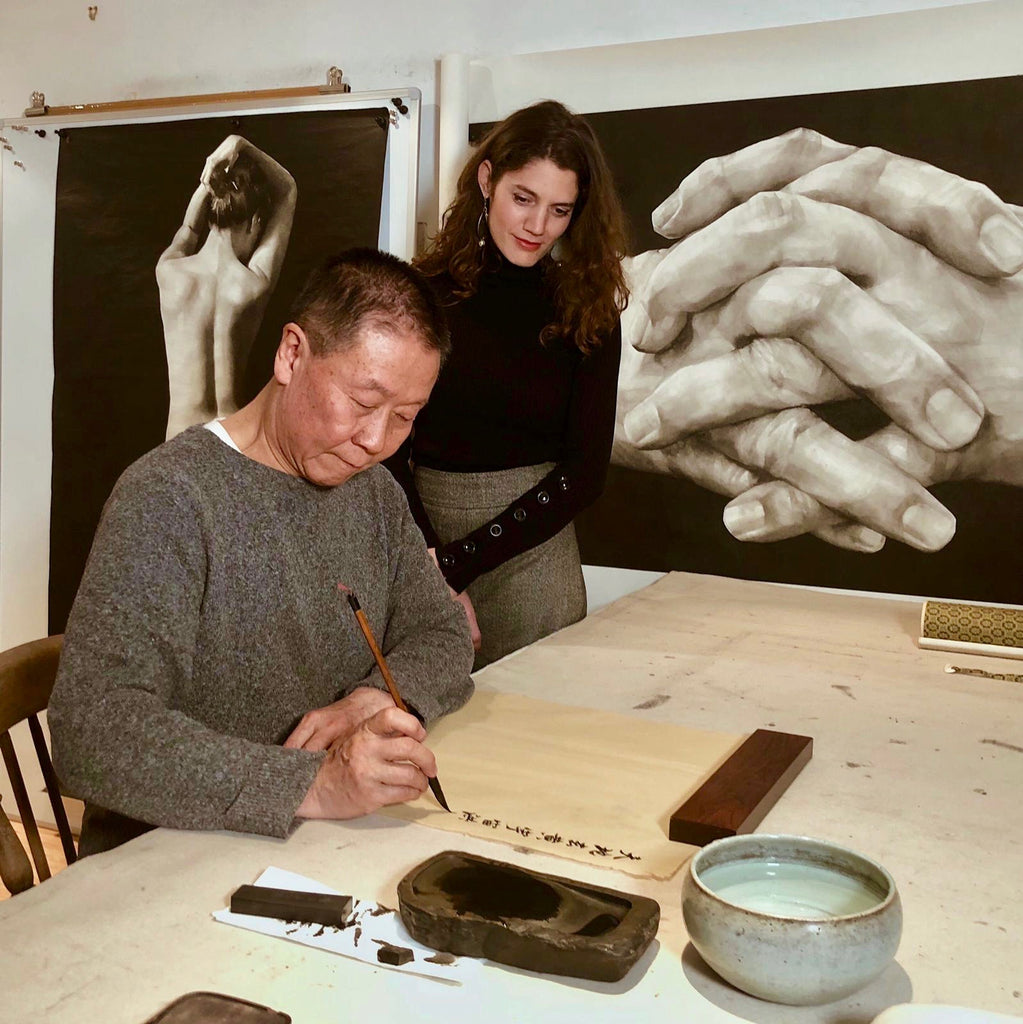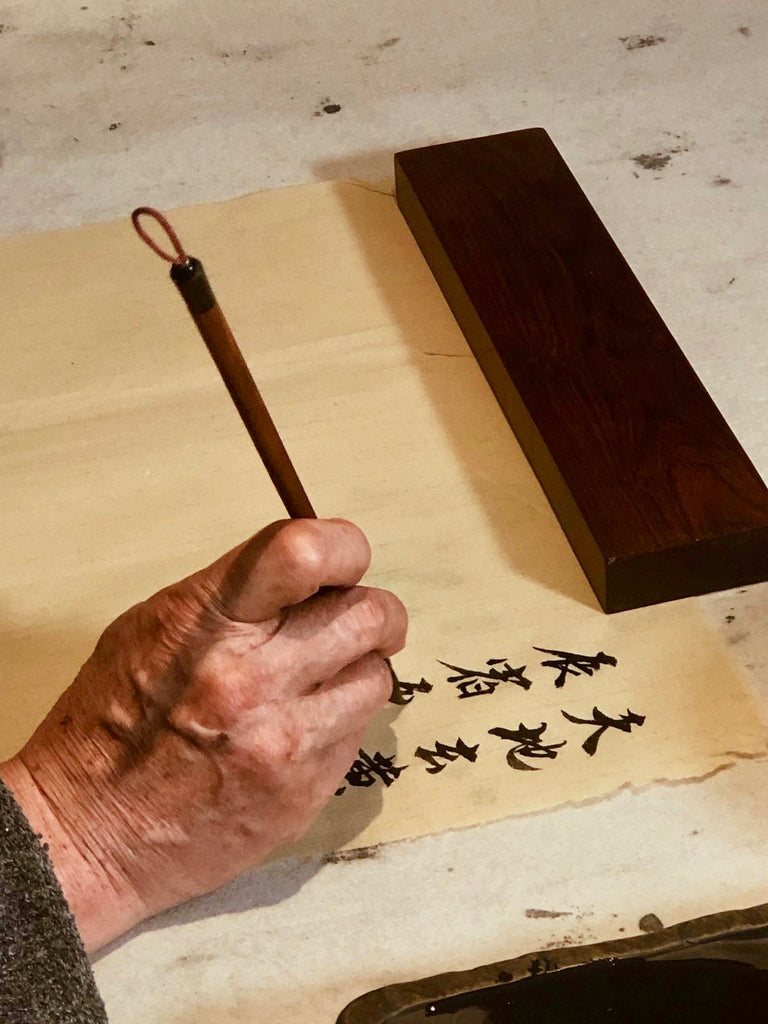Hua interviews one of the founders of Contemporary Chinese Art

Hua: Many people know you as one of the founding members of the Stars Group. Can you talk a bit about your experience of the cultural revolution?
Qu Lei Lei: At the time, I was working at CCTV (China Central Television) as a journalist. Through my job, I was able to see many aspects of society and how Chinese people lived and thought. During that period, I created many paintings about the destiny of the Chinese people and the future of the nation. These works were exhibited along with works of my peers at the first Stars Group exhibition outside the Chinese National Gallery.
An artist’s personality and integrity is reflected in his/her art.
Hua: You left China in 1985 and moved to the UK to study Western art. Can you elaborate on your artistic practices since then?
Qu Lei Lei: I set a goal in my earlier career which was to delve into one essential question every five years to find some form of an answer. From 1985 to 1990, I embarked on the journey of finding a new direction to take root as an artist in this foreign land. I painted many sketches using traditional Western and Chinese methods, hoping to find the best way to reconcile the differences between the two very different technical approaches. In the years between 1995 to 2000, I was clear in what I wanted to pursue in art. To summarise in one sentence: An artist’s personality and integrity is reflected in his/her art. From 1995 to 2000, I started to search for a universal artistic language to show different cultures, religions and societies. This universal motif I found was the human hand which became a series of ink paintings using the Western techniques of depicting light and shadow. From 2000 to 2005, I started to focus on human beings and their life stories. I painted portraits of people from different professions and asked them to write a line on the paintings to summarise their lives. This body of work became the series “Everyone's Life is an Epic.”
Without thoughts and ideas, any artwork is merely decorative.
From 2005 to 2010, I changed direction again to find how traditional Chinese elements — namely ink, water and the xuan paper — are able to interact with the art of the world. I chose the human body as the subject of my paintings, not only because it is one of the most beautiful creations since the beginning of the world but also because it is long-forbidden in the Chinese history of art. From 2010 to 2015 I began the “Empire” series, which is an attempt at showing my views of the history and culture of China in retrospect. This topic is much easier to discuss in words, but in the pictorial realm, it is very difficult to render. One of the representative works from the series is “Lei Feng.” (It is now in the collection of the British Museum.) From 2015 to today, I have been exploring the possibilities of other mediums and installations. The purpose of installations, in my opinion, is not for the sake of installations. Without thoughts and ideas, any artwork is merely decorative.
The beauty of calligraphy lies within its formality

Hua: What does traditional calligraphy mean to you? To what extent do you feel that calligraphy somehow plays a role in your works?
Qu Lei Lei: Starting at a very young age, I have learned the techniques of traditional Chinese calligraphy and ink paintings. The learning of Chinese traditional paintings is based on calligraphy which is essentially the art of dots and lines. The beauty of calligraphy lies within its formality. In my practices, I find myself coming back to the techniques of calligraphy, not only because of the art and finesse calligraphy is able to express, but also because of the embedded meanings of the characters.
Hua: What’s the ultimate purpose of your art?
Qu Lei Lei: To probe into humanity through a discussion of the ways of living, aspects of different cultures, human society and the values of life.

Hua: Can you talk a bit more about the ideas which inspired you or influenced you?
Qu Lei Lei: One concept I was deeply influenced by is from Laozi’s Tao Te Ching: “上善若水.水善利萬物而不爭。” meaning: “The highest virtue is like (that of) water. The virtue of water appears in its benefiting all things, and in its occupying, without striving (to the contrary).” My initial epiphany comes from the novel Jonathan Livingston Seagull written by the American writer Richard Bach. In the novel, the seagull named Jonathan Livingston is different from the others who only aim to find food and survive as long as they can. It believes that its only purpose of living is to fly. As an artist, I believe my ultimate purpose is to make art.
As an artist, I believe my ultimate purpose is to make art.
A video version of this interview will follow in the coming weeks.
---
Interview by Mei Shuhan
Qu Lei Lei will exhibit at The Royal Palace in Milan in De-Coding, Alcantara in the Tapestry Rooms from April 4th to May 12th 2019. The exhibition is curated by Domitilla Dardi and Angela Rui, also featuring the works of Sabine Marcelis, Constance Guisset and Space Popular. Qu Lei Lei is supported in this exhibition by Dagmar Carnevale Lavezzoli, Co-Owner and Director of Hua.
